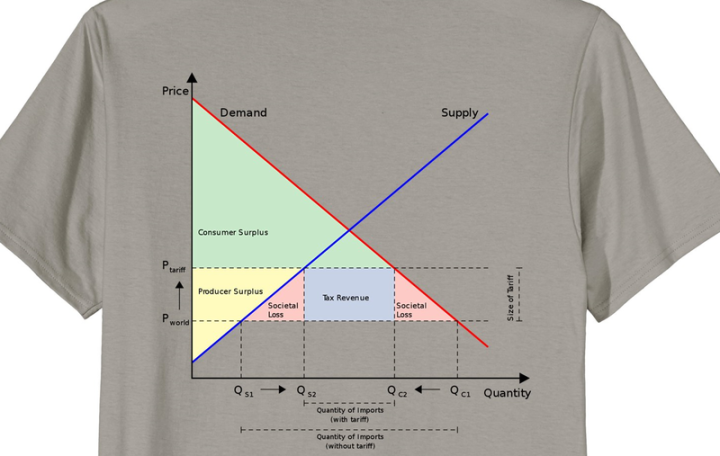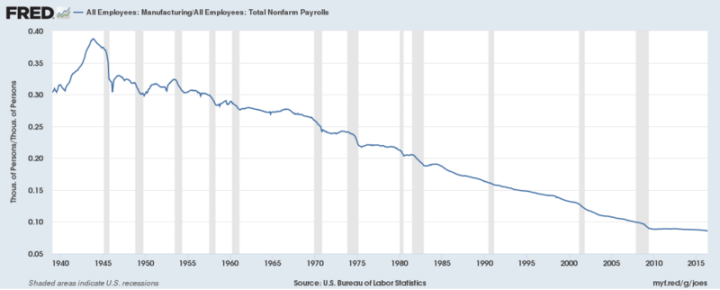T-shirt economy and trade tariffs

Dr. Roman von Ah
Economics
Financial Markets
Some may wonder about the tit-for-tat in the trade conflict instigated by the U.S. president. Is a trade war really threatening and have the stock exchanges corrected downward by 8% compared to the previous high for the year because of this?
Some may wonder about the tit-for-tat in the trade conflict instigated by the U.S. president. Is a trade war really threatening and have the stock exchanges corrected downward by 8% compared to the previous high for the year because of this?
Nobel Prize-winning economist Krugman maliciously states in the New York Times (4/4/2018), "One good answer is, that's a stupid question." He added that one should always keep the following three rules in mind when discussing the stock market: 1.) the stock market is not the economy, 2.) the stock market is not the economy, and 3.) the stock market is not the economy. The movements of stock markets could have most diverse justifications or none at all.
Another interpretation of the trade war issue would be to signal that the new U.S. leadership is denying the advantages of international value chains based on the division of labor and is thus acting irresponsibly to a certain extent. Even if the overheated rhetoric were to lead to a global trade war, conventional estimates of the economic costs would not come close to 10%, or even 6%, of GDP. Negative effects, yes, but nothing earth-shattering.
The cost of protectionism is not trade tariffs per se. International trade relies on comparative advantage: a country should specialize in what it does best (most efficiently). Protectionism means that countries no longer produce what they do best, relatively speaking, but also what they do less well. Without doubt, developed countries can also sew T-shirts instead of importing them from Bangladesh. In all likelihood, due to higher capital goods penetration in the industry, even more T-shirts would be produced per person-labor hour. However, the productivity advantage of highly developed economies would be much higher in other activities, for example, in the production of high-end machinery to make garments. The efficiency gains of trading partners are highest when both produce what they do best in relative terms.
The diagram on the T-shirt shows the classic illustration (source: Mankiw, Principles of Economics) of the advantageousness of international trade. An import tariff raises the price of, say, imported steel by the additional amount of the tariff. Domestic producers - who normally compete with foreign suppliers of imported steel - can sell their steel at the world market price plus this tariff.An import tariff on steel raises the price above the world market price. Domestic producers are encouraged to increase their steel production (from QS1 to QS2). At the same time, an import tariff increases the price that domestic buyers have to pay. As a result, consumers will reduce consumption (from QC1 to QC2).
The societal loss corresponds to the two red areas ('societal loss'). The higher prices lead to an increase in domestic supply, with - due to the higher prices - simultaneously reduced demand (because of the higher prices).
The following graph shows the share of the manufacturing sector in the total labor market ex agriculture. The reduction from almost 40% in the final phase of World War II to less than 10% today should give pause for thought.
Turning back the wheel of (economic) history is illusory
Behind the instigated trade tariff discussion are election promises of the incumbent president. Unlike the Democratic challenger, he has realized that there are large numbers of (resigned/frustrated) voters in the U.S. who are losers in global competition and have been largely ignored by past policies. For example, we pointed out in a previous blog that 50% of US households have seen no progress in their real wages for 30 years (sic!). Thanks to omnipresent media, this forgotten half of the workforce knows all too well how great the progress of the other half has been during that time.
Perhaps it could be that the trade tariff discussion is essentially a threatening gesture to get the Chinese (with USD 530 billion of exports to the US) in particular to lower their market entry barriers (tariffs, duties, etc.) so that the US (with USD 190 billion of exports to China) gets higher sales opportunities. At least this is how one could interpret the recent public hints of Chinese Premier Li Keqiang.
Trade tariffs are not suitable for reversing structural economic changes. What will rejoice and profit are entrepreneurs in industries that produce, sell and earn more domestically thanks to tariffs and the associated border protection. The worker left behind by society from, for example, the Rust Belt, the oldest and largest industrial region in the northeastern U.S., will gain little from this. Especially, as can unfortunately be assumed, if nothing will change in the income and wealth distribution of the USA. It is difficult for us Europeans to understand where the strong support for the incumbent president comes from. But it could well be that labor in the U.S. will be (a little) worse off economically with the tariffs, but feel better about it because their president is fighting for them.
As long as the healthy business orientation of Americans symbolized on the T-shirt continues, and it becomes even more obvious that everyone loses in trade wars, the soup of trade tariffs will probably be eaten less hot than it is spooned.


